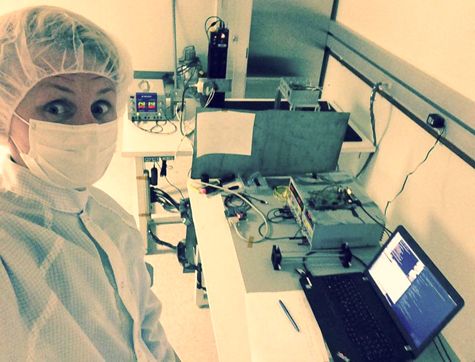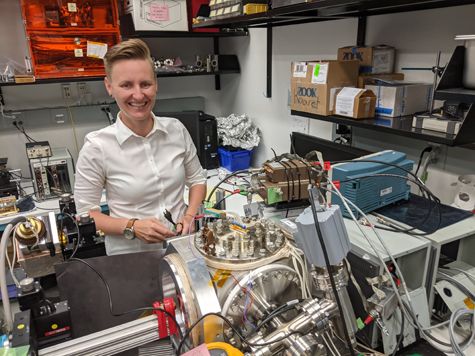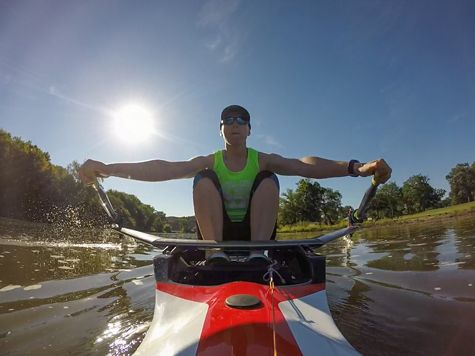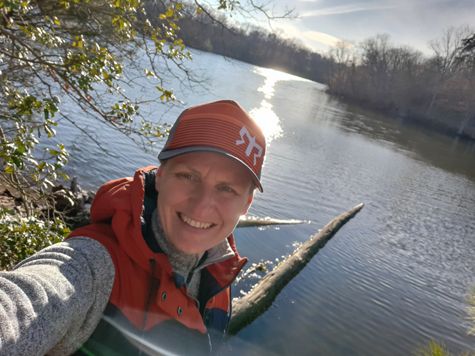Early Career Scientist Spotlight
Dr. Anna Zajczyk (she/her/hers)
Instrumental Astrophysicist
X-ray Astrophysics Laboratory (662)
What motivated you to pursue a career in astronomy?
When I chose to study astronomy – first to do my MSc and then to pursue PhD in it – I never thought about it as choosing a “career”. It was more about learning, understanding, and discovering how the nature works. The inner workings of the cosmos were fascinating to me from an early age, and this is what ultimately pushed me towards research in astronomy (the dark and starry skies in the village where I grew up helped to light this spark, too).
What is one of your favorite moments in your career so far?
Watching the launch of the Orbital ATK OA-9 resupply mission to the International Space Station (ISS) was one of my favorite moments. This is because ‘my precious’ HaloSat CubeSat was onboard this ride to the ISS. This marked the point in time when all the development, testing, calibration, assembly, and integration work was done and now the space operations of the instrument that we worked on for the past ~2 years were about to start. This was quite an exciting time. HaloSat went on to operate successfully for the next ~2.5 years (deorbited in January 2021), and it has provided valuable insight into the morphology of the Milky Way’s halo.

Credit: Anna Zajczyk
What is your research focus?
My work is focused on developing detectors that will be used to conduct observations of astrophysical sources in the X-ray domain. Here at GSFC, I am leading the development of a Hard X-ray Photoelectric Polarimeter or HXPP for short. In this gas-filled detector, X-ray photons interact with gas molecules via the photoelectric effect and produce photoelectrons, which then go on to produce secondary ionization in their wake. Under the influence of a uniform electric field, this charge cloud is drifted towards the multiplication stage and then to the readout electrodes. We use a time projection chamber technique to reconstruct the image of the ionization track, which is then analyzed to determine the polarization properties (i.e., polarization angle and polarization fraction) of the individual X-ray photons that interacted in the detector. Careful selection of a gas type and gas pressure makes our polarimeter sensitive to X-ray photons with energies ~10-60 keV. The reason why we are developing HXPP is to fly it on a balloon platform instrumented with a hard X-ray mirror, and to perform observations of some of the most extreme astronomical objects (e.g., accreting neutron stars and rotation-powered pulsars). These observations will help reveal the geometry and emission mechanisms at play in these objects. It will also prepare our detector for future space-borne investigations.

Credit: Anna Ogorzalek
What does a typical day at work look like for you?
Currently my “typical” day at work focuses on performance testing of our new detector unit that we instrumented the HXPP polarimeter with. This means that I start my day by filling the polarimeter chamber with Argon and Dimethyl Ether gas mix to the specific pressure and mix ratio. I power on the detector and illuminate it with a Cd-109 radioactive source. Then I vary the detector operating voltages (drift field, voltage across the amplification stage, and transfer field) to find the optimal operating parameters that will allow for detector stable operation. This is a time-consuming process and takes days-to-weeks of measurements. When I am not taking measurements with HXPP, I am either analyzing the collected data to prepare the action plan for the next day, preparing for the HXPP calibration campaign at the Argonne National Lab’s Advanced Photon Source, or developing the pipeline for the tracker subsystem on the ComPair experiment. ComPair is a Compton – Pair production telescope sensitive in the MeV band, which is to be flown on a balloon platform in the fall of 2023. The goal of this experiment is to demonstrate technologies needed for the next generation gamma-ray observatories like AMEGO-X. The AMEGO-X mission will peer into the world of extreme explosions and extreme accelerators: supermassive black holes, neutron stars and their mergers, and the remnants of Galactic supernovae.
Did you always know that you wanted to be an instrumental astrophysicist?
No. When I started my astronomy studies I was interested in observational astronomy, and so for my MSc I studied RS Ophiuchi – a recurrent nova and a symbiotic star system – with optical high-resolution spectroscopy. In my PhD research, I studied the G21.5-0.9 supernova remnant with infrared imaging, spectroscopy, and polarimetry. In parallel, through numerical simulations I was looking into gamma-ray emission properties of millisecond pulsars located in globular clusters. During my MSc and PhD, I also gained hands-on experience in operating various telescopes/instruments (e.g., H.E.S.S. (High Energy Stereoscopic System) Cherenkov Telescope in Namibia, and 1.3m optical telescope instrumented with the OPTIMA (Optical Pulsar Timing Analyzer) polarimeter at the Skinakas Observatory on Crete Island). This mix of experiences is what sparked my interest in the instrumental side of astrophysics and prompted me to seek post-doctoral appointments focused on development of detectors/instrumentation for use in high-energy astrophysics.
Who inspires you?
I do not have any specific person that inspires me. Rather I get my inspiration from the people that I work or interact with.
What do you like to do in your free time?
I like spending my free time outdoors – doing variety of things like hiking, road cycling, or exploring Maryland and neighboring states on a motorcycle. My passion though is rowing – in the spring, summer, and fall seasons, I start most of my days rowing on the South River with my Annapolis Rowing Club crew. Apart from just being a good quality exercise, for me personally there is something grounding in this experience when we go out on the river right before the sunrise and do our 10km-rows.

Credit: Anna Zajczyk
Biography
Home Town:
Kolbudy, Poland
Undergraduate Degree:
MSc in Astronomy, Nicolaus Copernicus University, Toruń, Poland
Post-graduate Degrees:
PhD in Astrophysics, Nicolaus Copernicus Astronomical Center, Polish Academy of Sciences, Warszawa, Poland
PhD in Astrophysics, Université Montpellier 2, Montpellier, France

Link to Dr. Zajczyk's GSFC Bio
